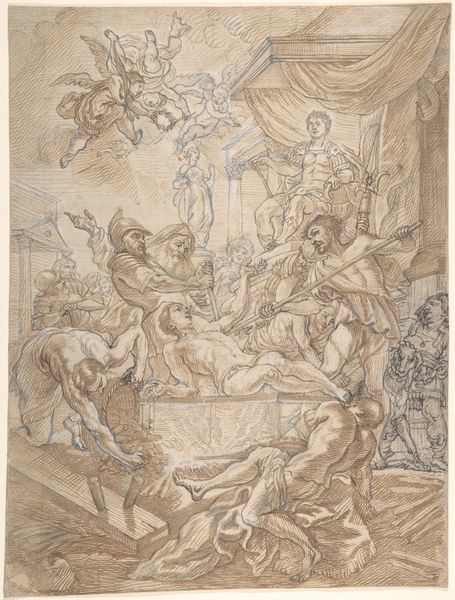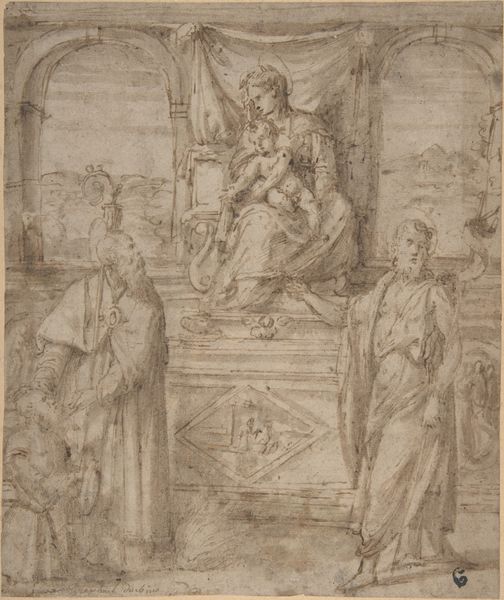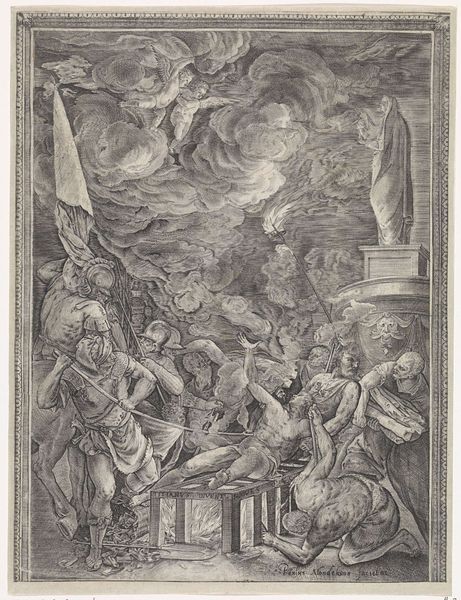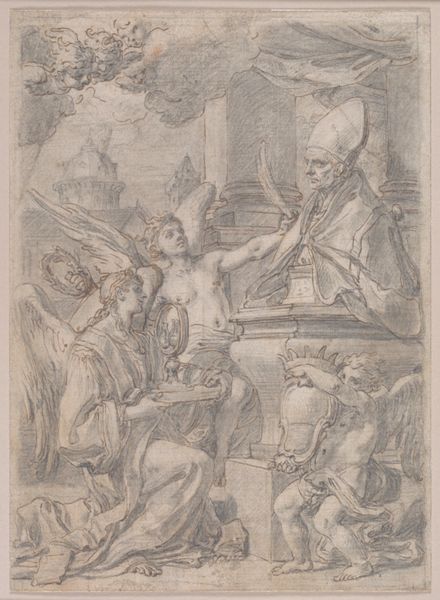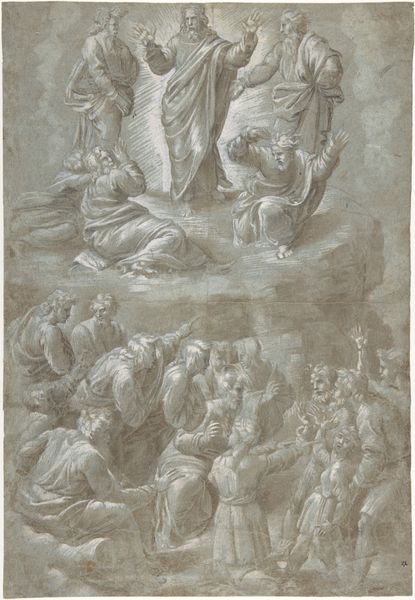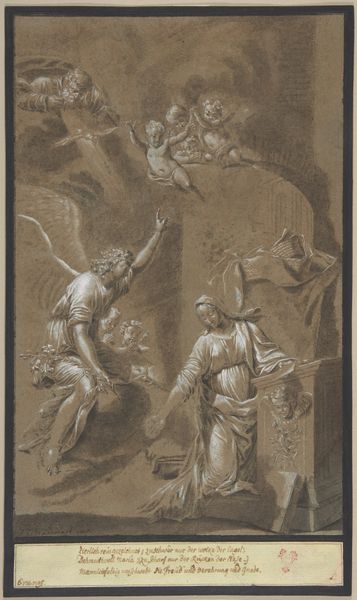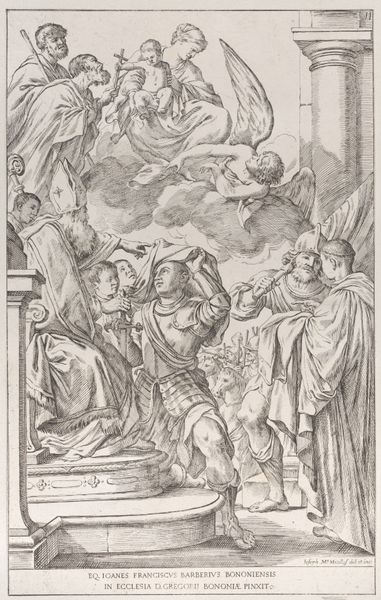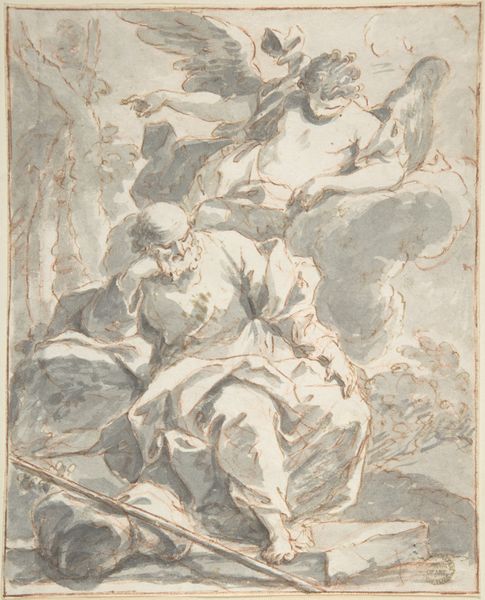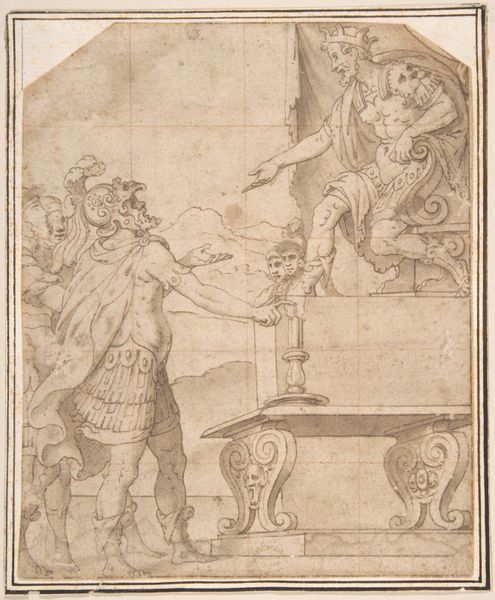
David Chooses Three Days of Pestilence (II Samuel 24:10-17) 1642 - 1682
0:00
0:00
drawing, ink
#
drawing
#
baroque
#
figuration
#
ink
#
history-painting
Dimensions: 10 1/4 x 7 1/16 in. (26.1 x 17.9 cm.)
Copyright: Public Domain
Curator: Here we have Valentin Lefebvre's ink drawing, "David Chooses Three Days of Pestilence (II Samuel 24:10-17)", made sometime between 1642 and 1682. It’s currently housed at the Metropolitan Museum of Art. My first impression is just how Baroque it is: look at that theatrical presentation. Editor: There’s an interesting tension here. It's quite monochromatic, lending it a sense of classical restraint, yet the swirling figures practically leap off the page. I am interested in the medium, in particular. Ink allows for such fluid and swift execution, enabling the artist to quickly map out a full history painting. Curator: Exactly. Think of the symbolic weight packed into each swirl of ink. David kneels, caught between divine wrath and earthly consequences. Above him, the avenging angel looms, not just with a sword, but carrying a skull, the ultimate memento mori. It echoes themes we see even today in our responses to large scale epidemics, doesn’t it? The consequences of sin, punishment, and the search for redemption are all layered here. Editor: The layered construction of the artwork reminds me of production processes of that time. It suggests the possibilities of the workshop; that this was intended perhaps as a preliminary work. I think it also emphasizes Lefebvre’s labor. The use of ink also speaks to broader issues of accessibility. It democratizes the possibility of creation by relying on accessible materials. Curator: And notice the theatrical backdrop, framing David’s penitence? That’s so representative of its era. Editor: These swirling fabrics and the stagecraft add to my fascination with the physical act of making, how an image is constructed to evoke those feelings of high drama that are indicative of its cultural origins and period of creation. Curator: Lefebvre’s choices make this so potent, especially how that single source of light isolates David from everything else. It shows David in his full humanity – as someone burdened and alone. It shows a psychological journey more so than only a moment of biblical narrative. Editor: Reflecting on Lefebvre’s labor through the chosen materials deepens my view of how artists balance themes of the personal, in David’s human-level dilemma, with that of spectacle in social memory. Curator: And considering this as an image of enduring anxieties definitely shifts how I respond to its more overt Baroque elements.
Comments
No comments
Be the first to comment and join the conversation on the ultimate creative platform.
